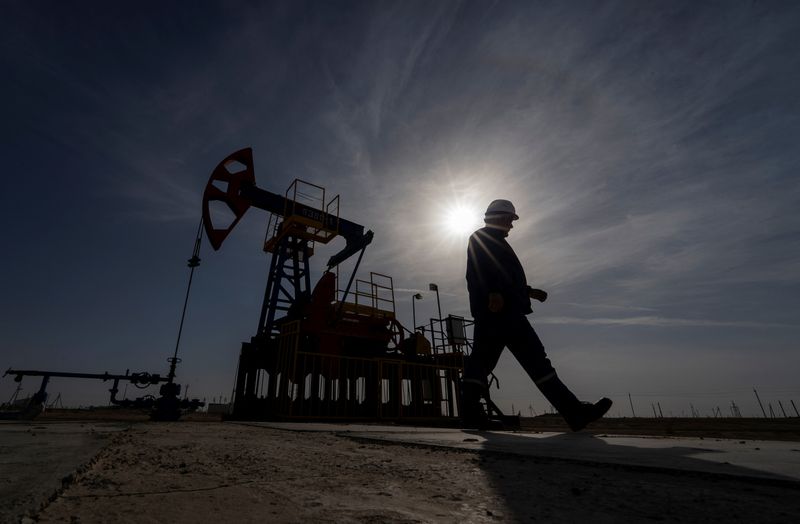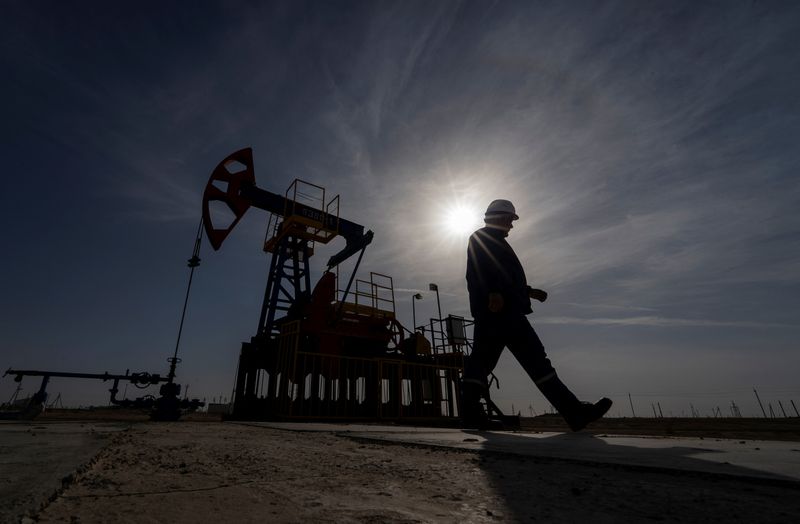
By Arunima Kumar
(Reuters) -Oil prices steadied on Wednesday after trading higher as industry data showed a bigger-than-expected draw in U.S. crude stockpiles, with gains capped by economic headwinds from China and the euro zone.
Brent crude futures inched up 7 cents, or 0.08%, to $86.31 per barrel at 0925 GMT. U.S. West Texas Intermediate crude futures gained 5 cents or 0.06% to $82.86 per barrel.
On Tuesday, both benchmarks rose to their highest since the end of April but closed down on the day as fears faded that Hurricane Beryl would disrupt production in the Gulf of Mexico.
U.S. crude oil inventories fell by 9.163 million barrels in the week ended June 28, according to market sources citing American Petroleum Institute figures on Tuesday. However, gasoline inventories rose by 2.468 million barrels, and distillates fell by 740,000 barrels.
“This decline in crude levels might just have saved more of a sell off after the hurricane news”, PVM Oil analyst John Evans said in a note.
Analysts in a Reuters poll had expected a 700,000 barrel draw in crude inventories, a 1.3 million barrel drop in gasoline stocks, and a 1.2 million barrel fall in distillates stocks.
The Energy Information Administration, is due to release its weekly data on Wednesday at 1430 GMT.
Traders will also be focusing on U.S. gasoline demand, which is expected to ramp up as the summer travel season picks up with the Independence Day holiday this week.
The American Automobile Association has forecast that travel during the holiday period will be 5.2% higher than in 2023.
Elsewhere, surveys showed that China’s services activity expanded at the slowest pace in eight months and confidence hit a four-year low in June dragged by slower growth in new orders, while overall business growth across the euro zone also slowed sharply last month.

OPEC output also rose in June for a second consecutive month, a Reuters survey found on Tuesday, as higher supply from Nigeria and Iran offset the impact of voluntary supply cuts by other members and the wider OPEC+ alliance.
“OPEC+ was reported to have increased production in June despite pledges to keep quotas in check through third quarter, and lingering concerns over a tepid recovery in China sent a bearish signal,” said Panmure Gordon analyst Ashley Kelty.
This post is originally published on INVESTING.


